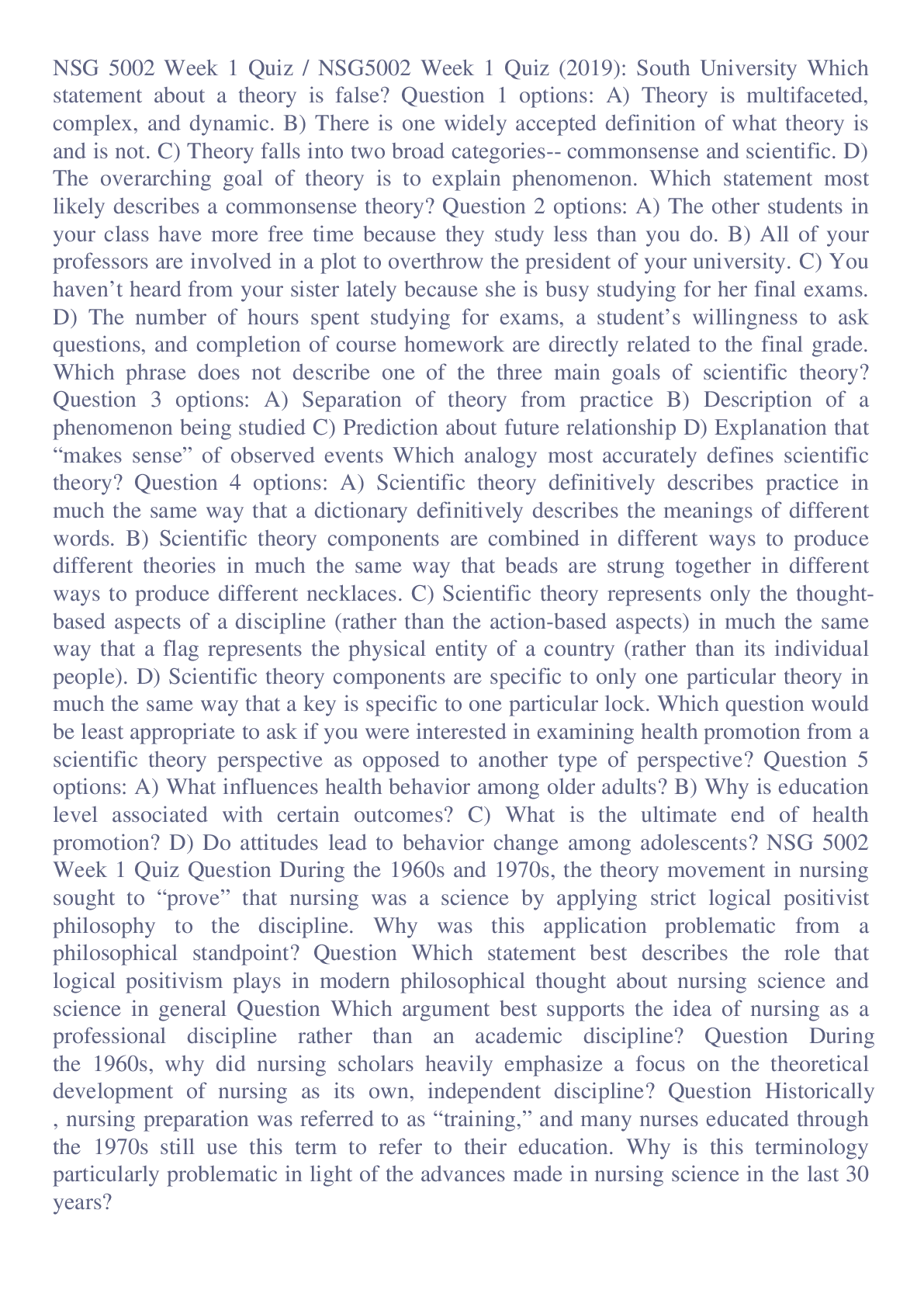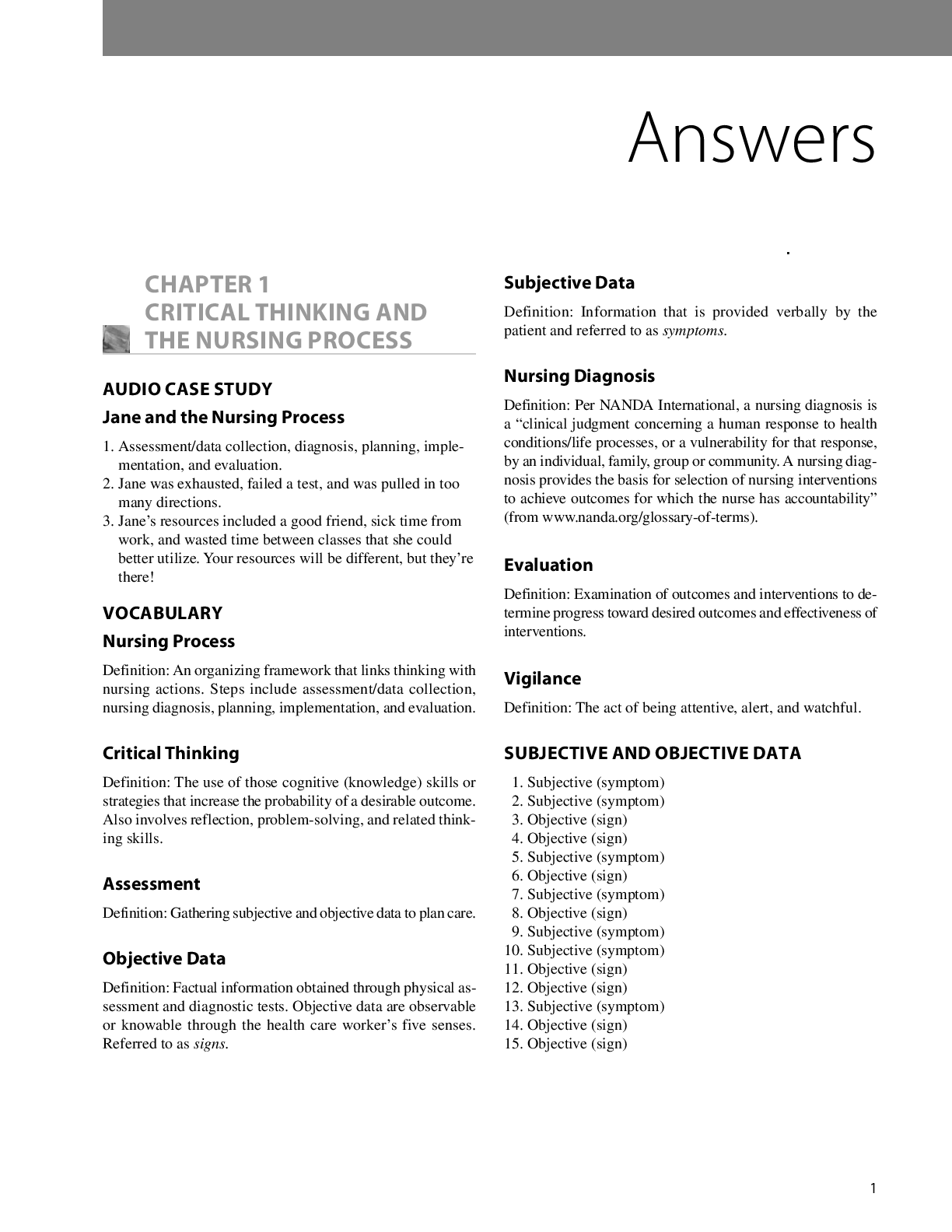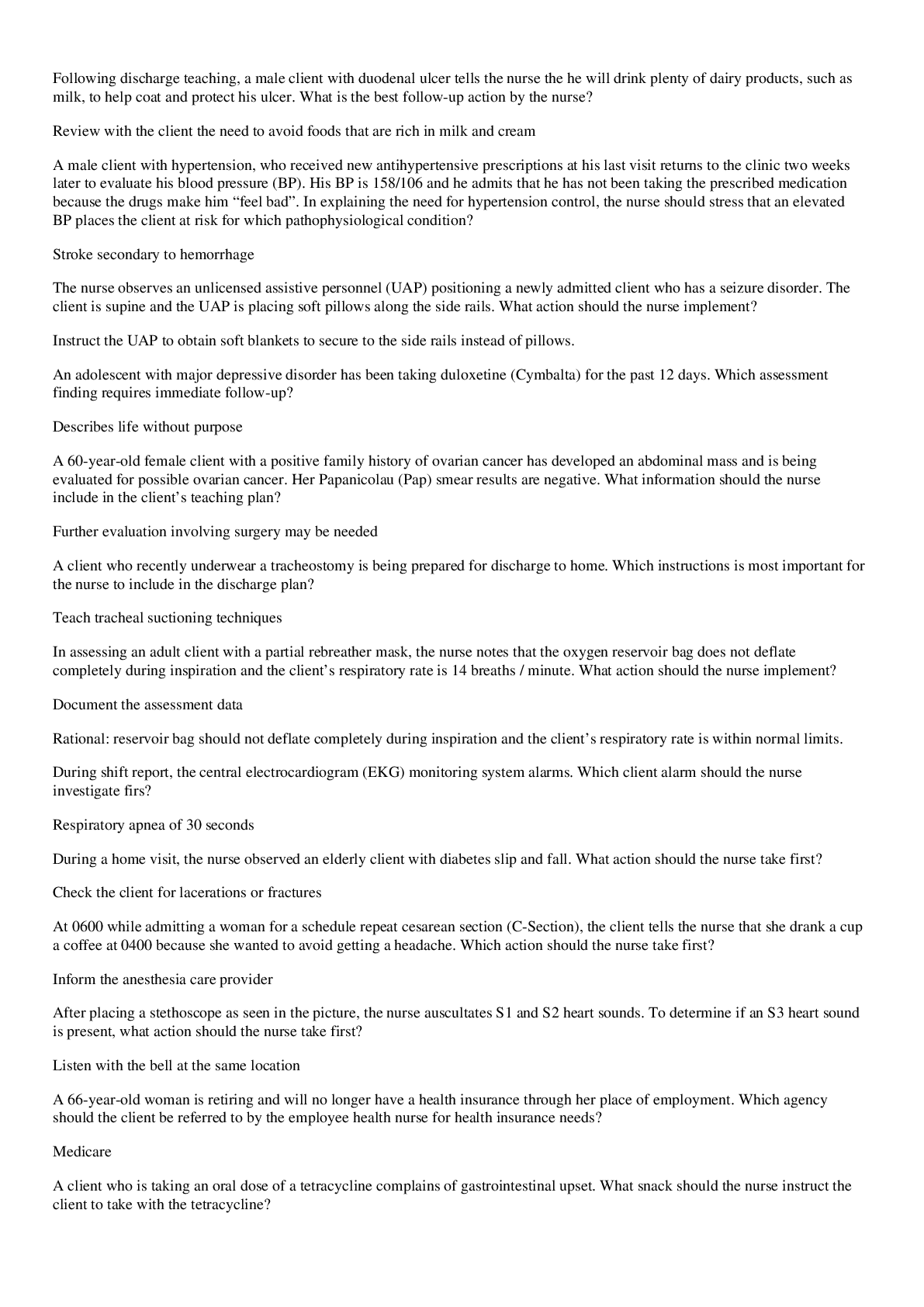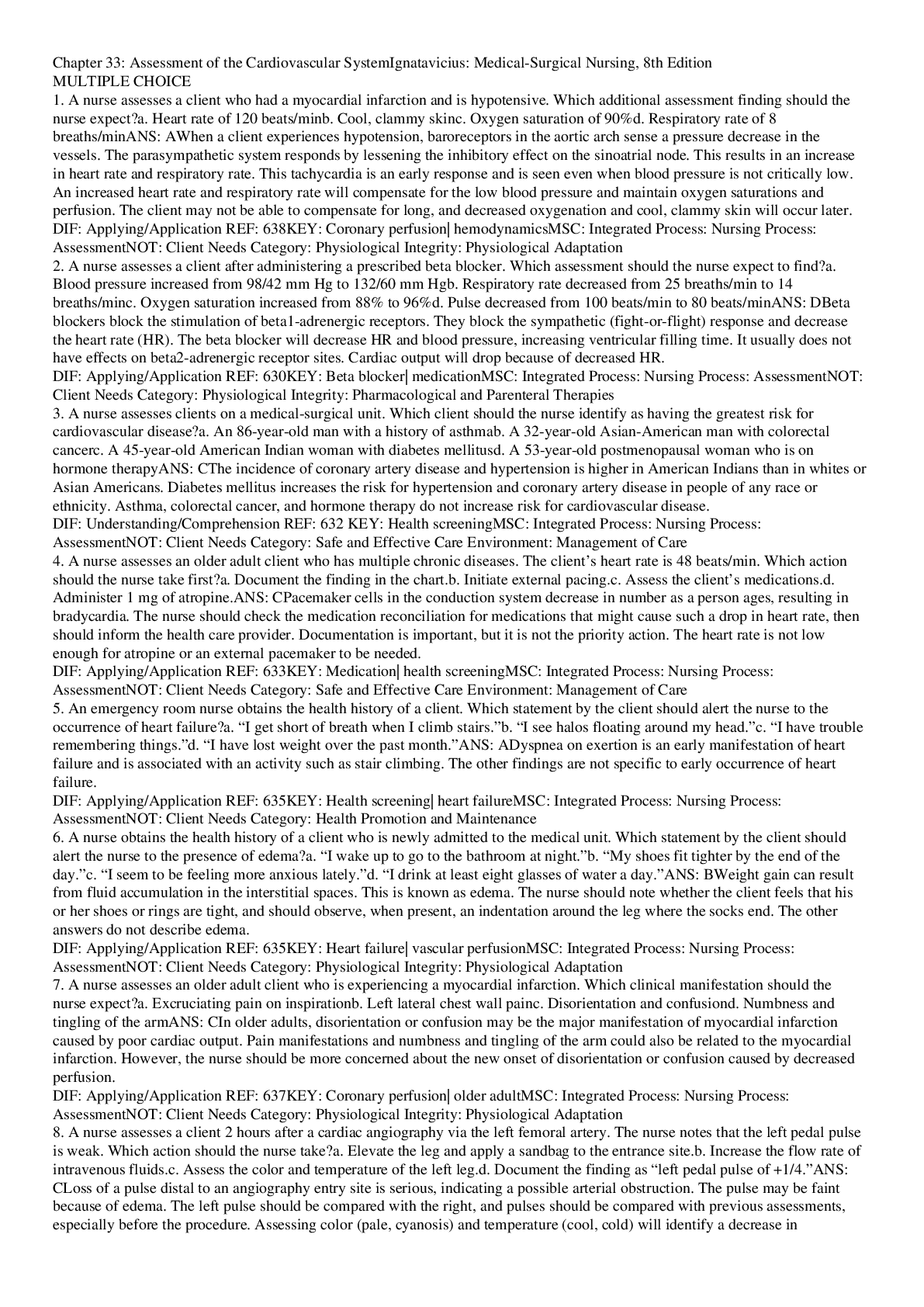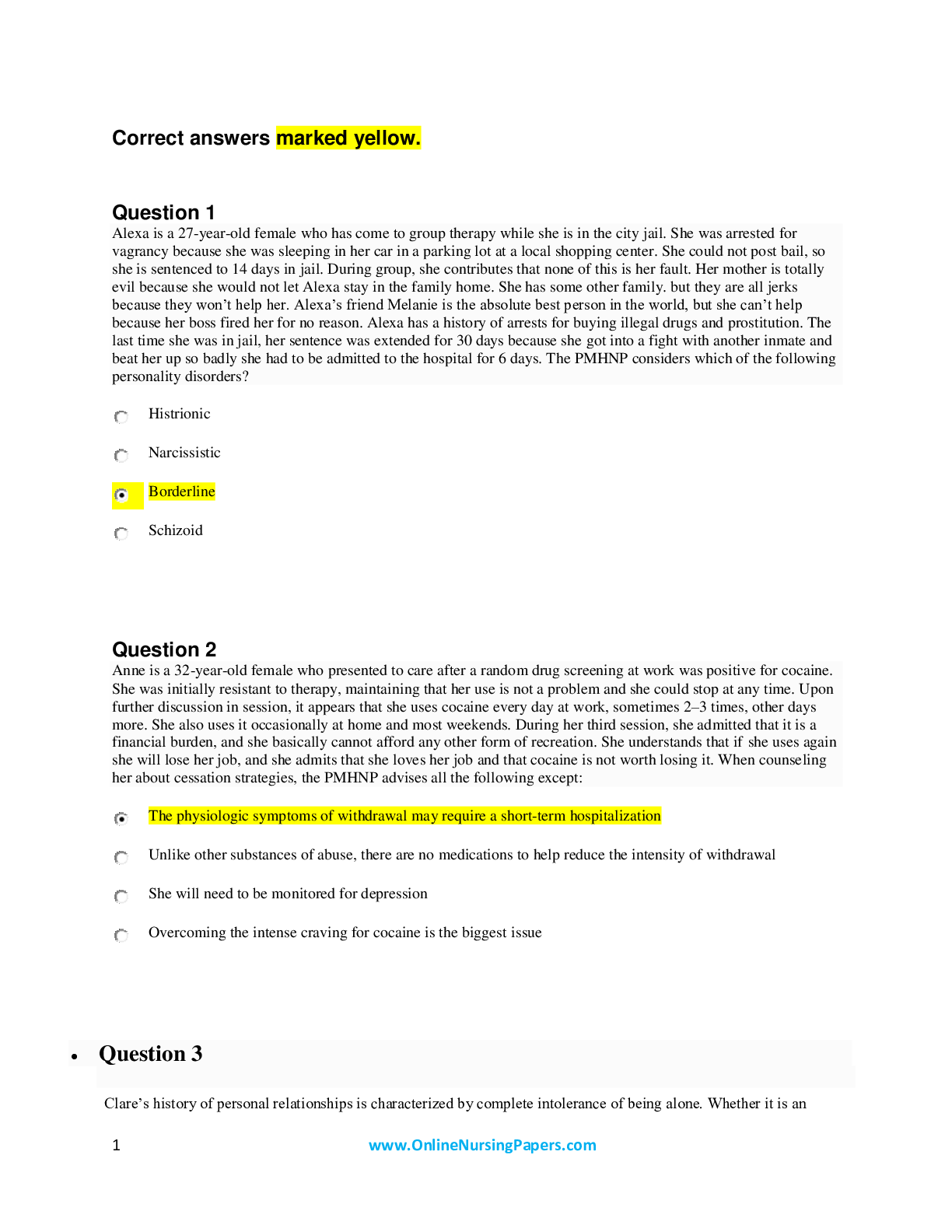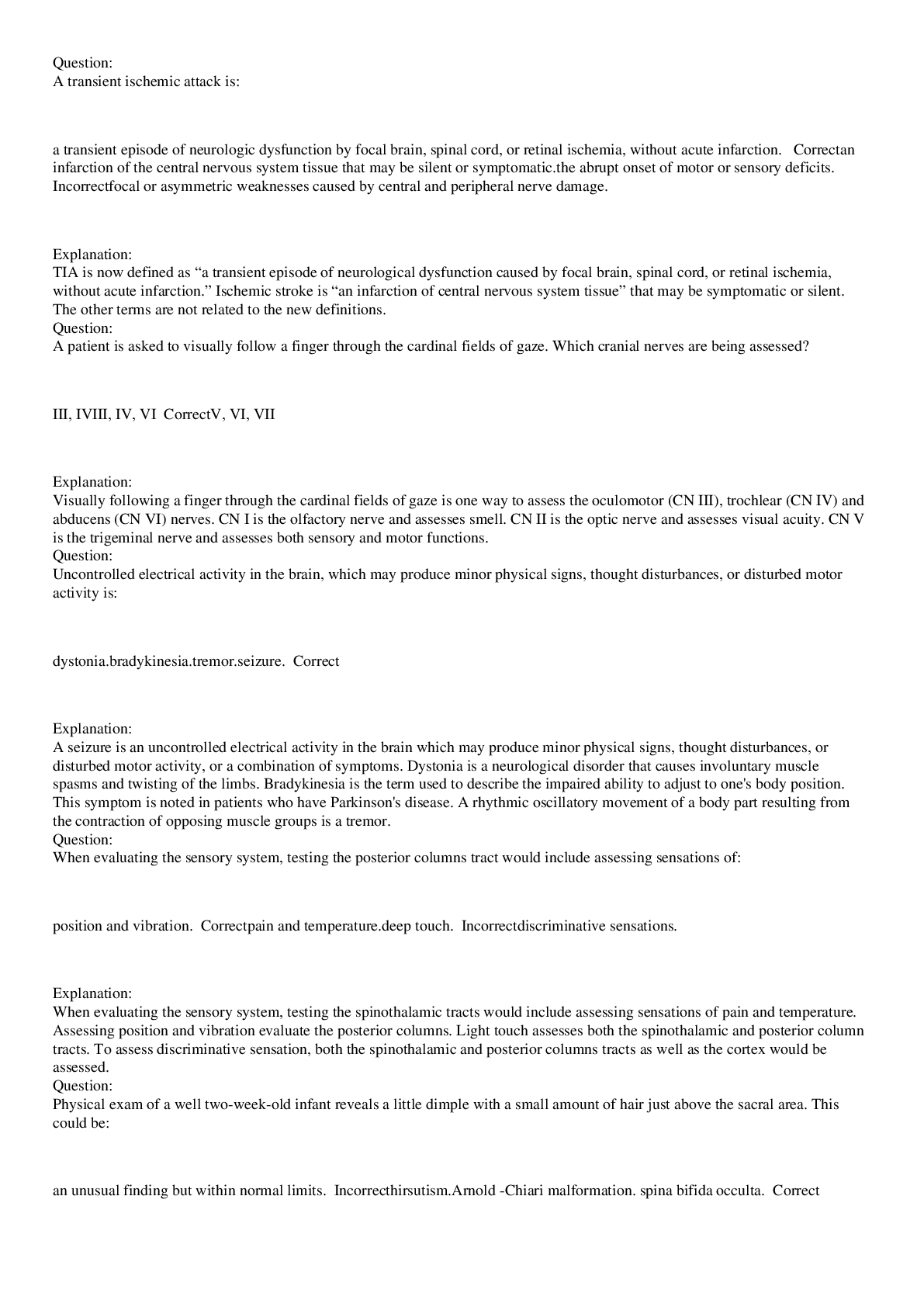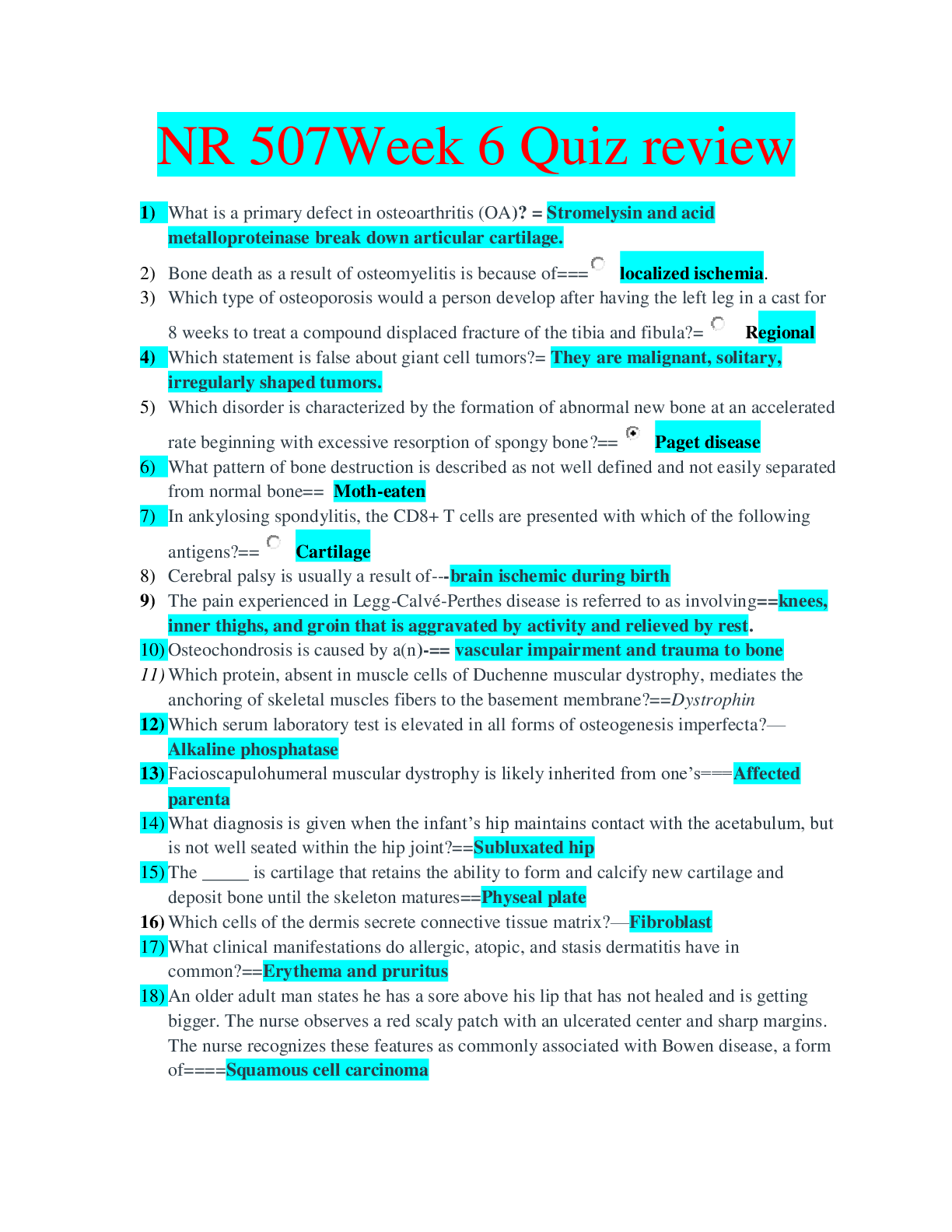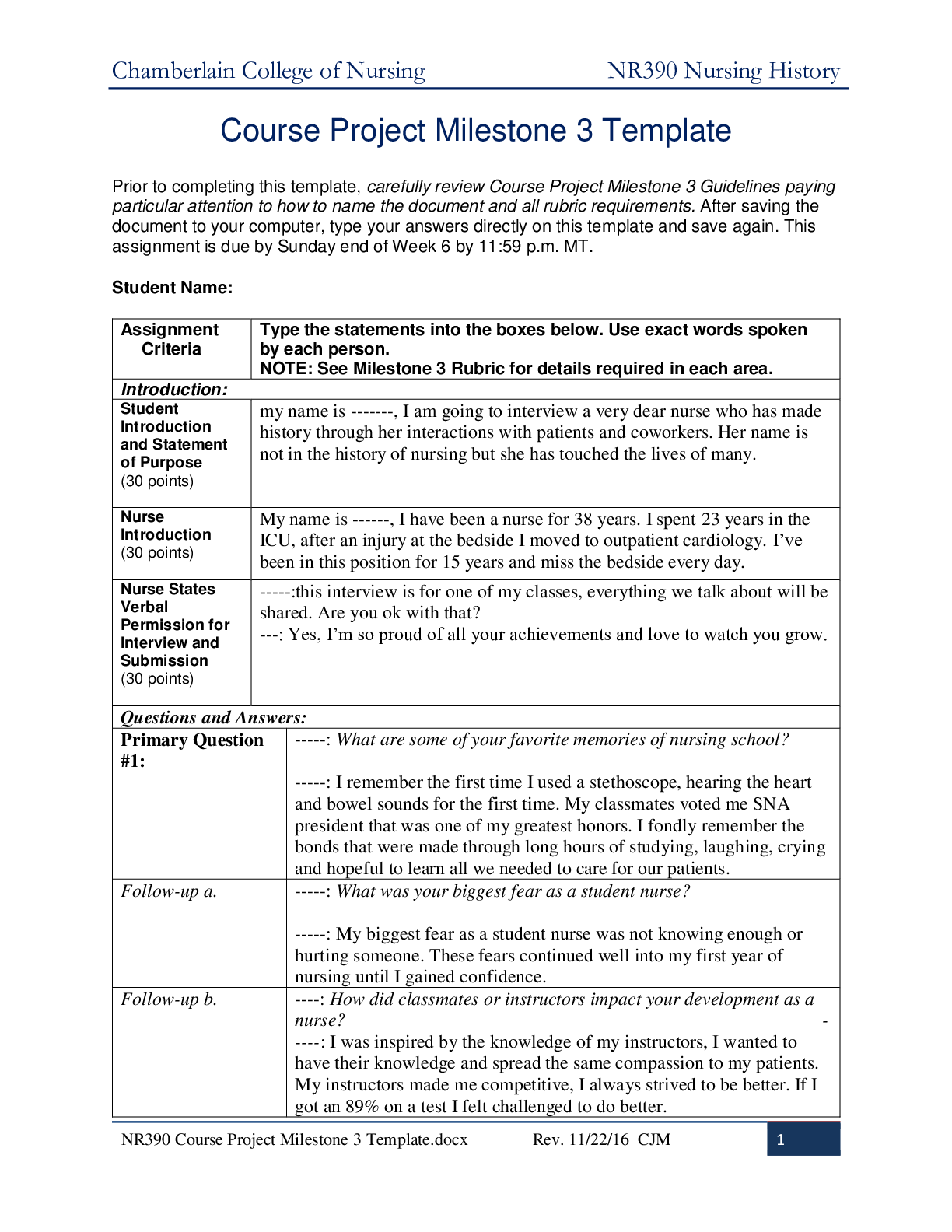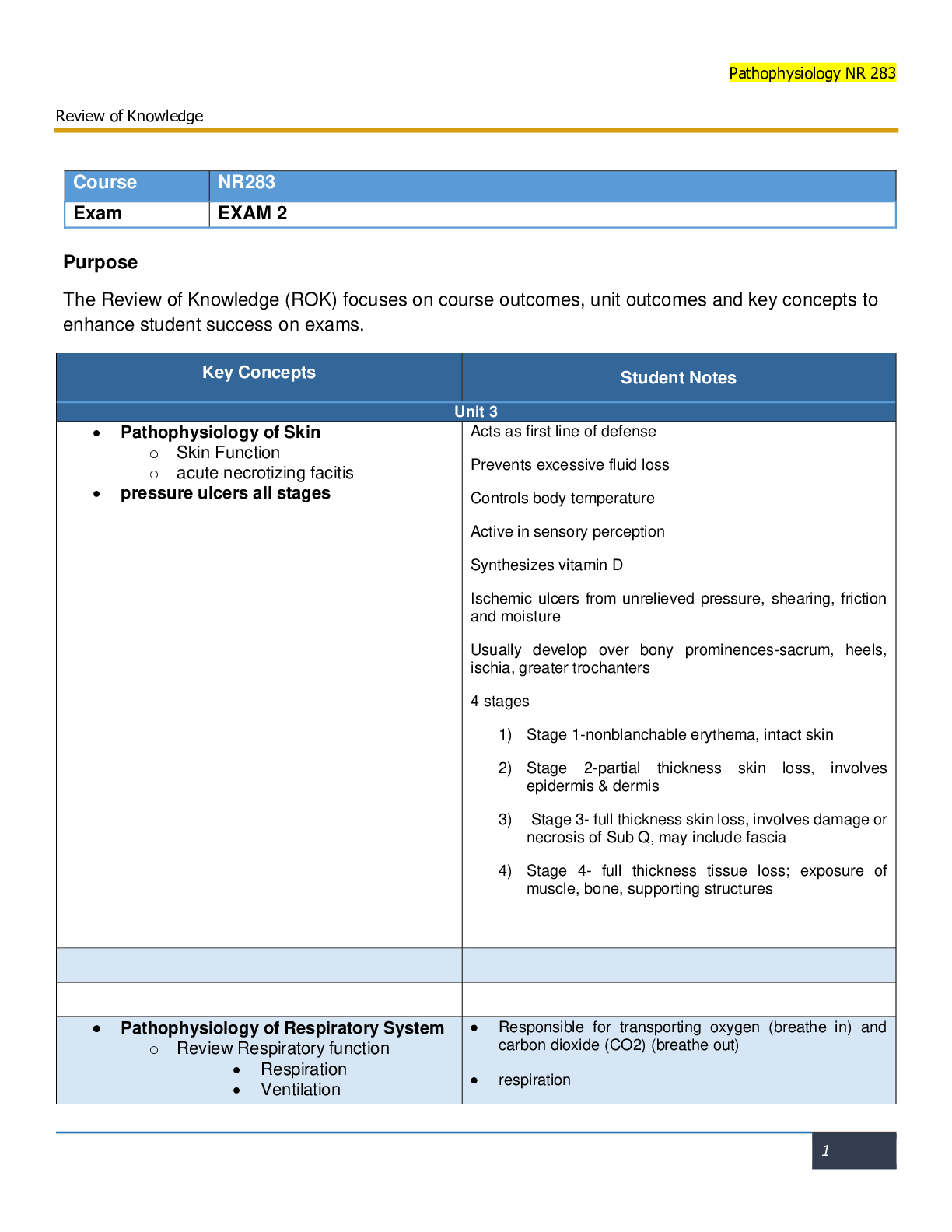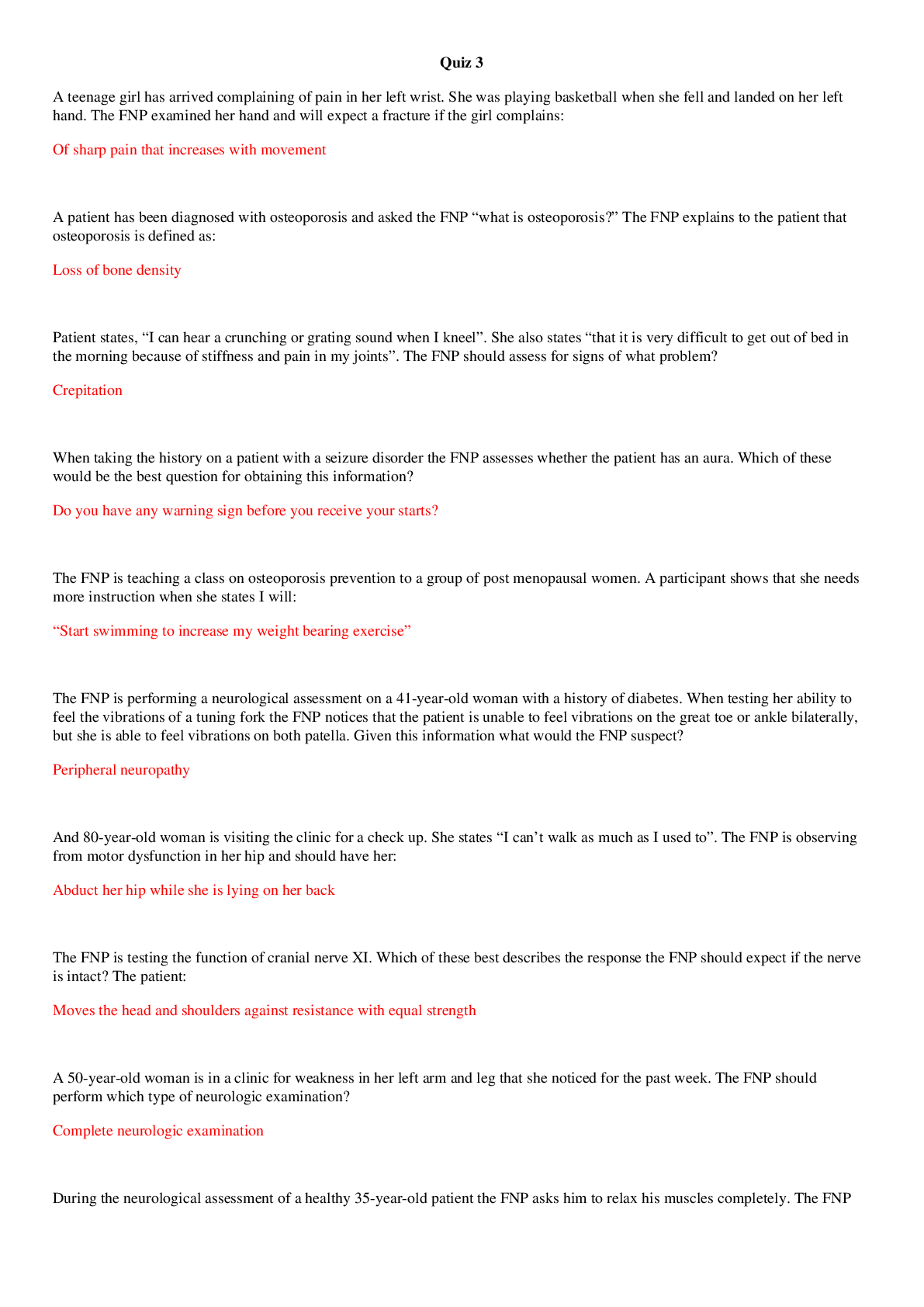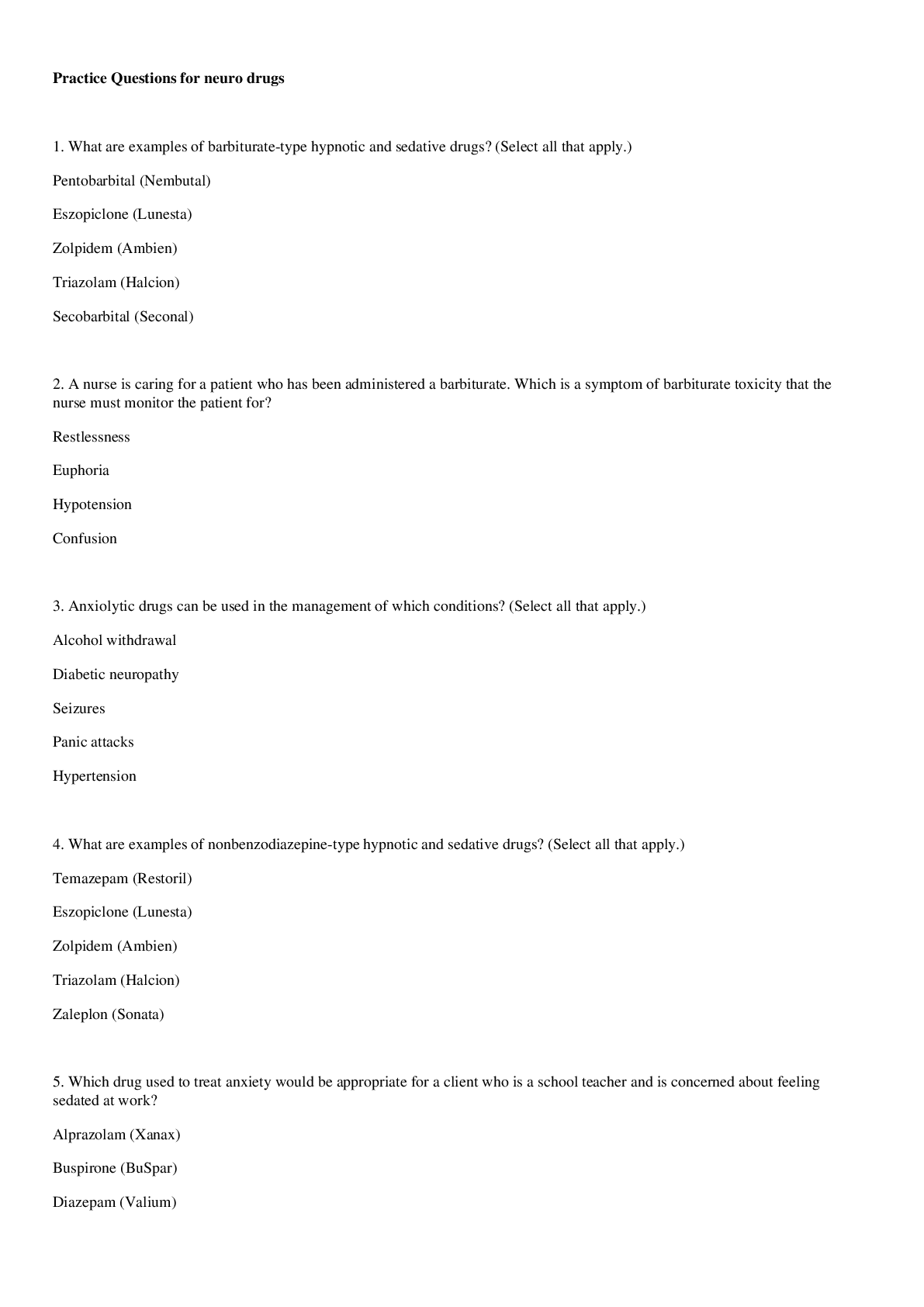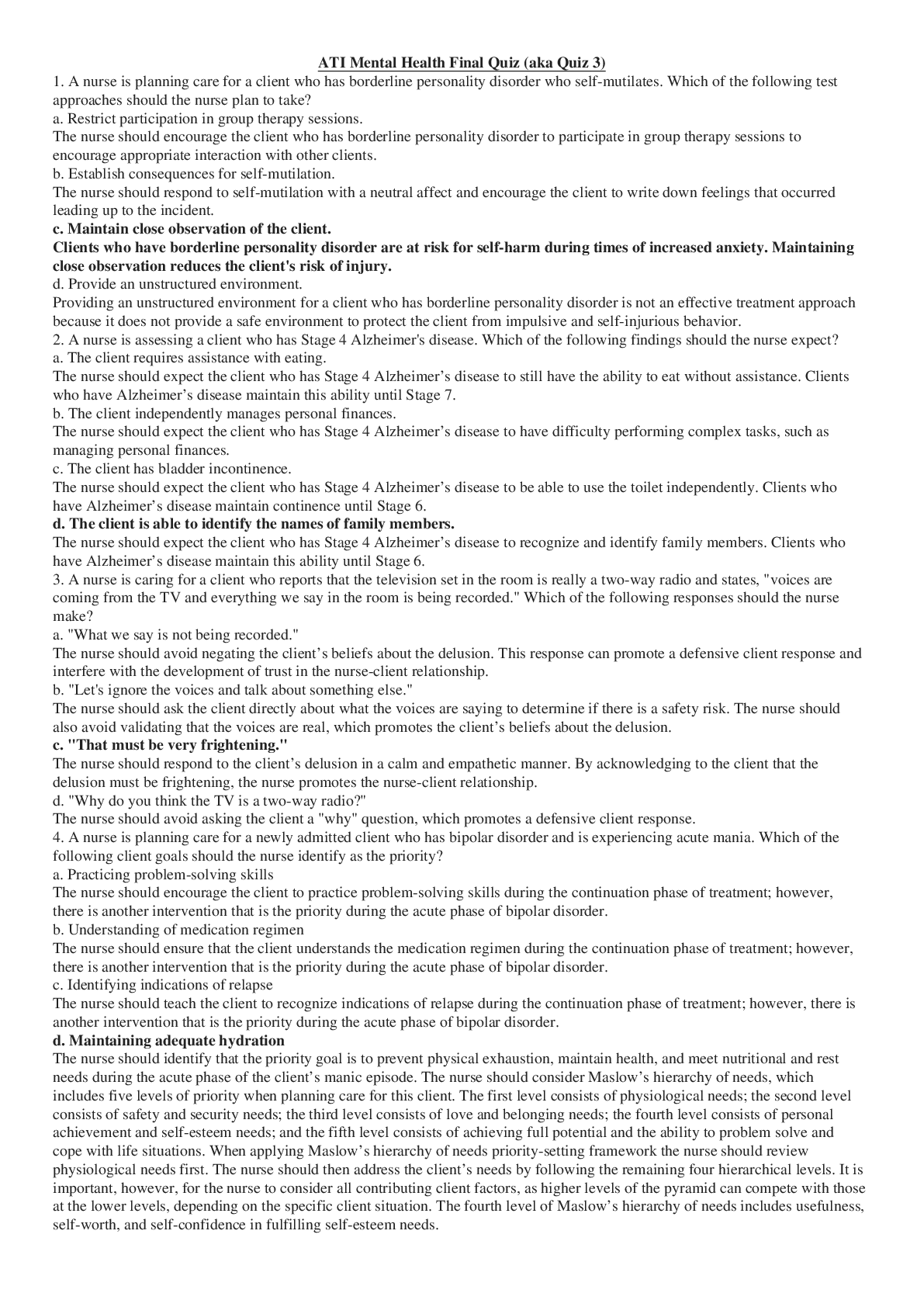Pathophysiology > STUDY GUIDE > Chamberlain College of Nursing - NR 507 Midterm Study Guide. (All)
Chamberlain College of Nursing - NR 507 Midterm Study Guide.
Document Content and Description Below
Midterm Study Guide Pulmonary: Review concepts related to anticholinergic drugs and the treatment for asthma o (Block acetylcholine binding (primarily in lung) -> bronchodilation through decre... ased parasympathetic response Tiotropium, Ipratropium o Short-acting beta-adrenergic agonists (SABA) – activate beta receptors primarily in the lung -> bronchodilation through increased sympathetic response Albuterol o Oral corticosteroids – inhibit inflammatory cells and chemical production -> reduce inflammatory process Prednisone, prednisolone, methylprednisolone o Long acting: Inhaled corticosteroids Beclomethasone, triamcinolone Mast cell stabilizers Cromolyn Leukotriene modifiers Zafirlukast, Montelukast Long acting beta2 adrenergic agonists Salmeterol Methylxanthines Theophylline Monoclonal antibodies Omalizumab Bronchitis and associated pathogenesis o In bronchitis, inspired irritants promote bronchial inflammation, causing bronchial edema, increases the size and number of mucous glands and goblet cells in the airway epithelium, smooth muscle hypertrophy with fibrosis, and narrowing of the airways. o Hypersecretion of thick, tenacious mucus occurs and cannot be cleared because of impaired ciliary function. The lung’s defense mechanisms are therefore compromised, increasing susceptibility to pulmonary infection, which contributes to airway injury and ineffective repair. o Frequent infectious exacerbations from bacterial colonization of damaged airways are complicated by bronchospasm with dyspnea and productive cough. Chronic bronchitis and related acid/base disturbances, perfusion, blood flow between the heart and lungs o Characterized by bronchial inflammation, hypersecretion of mucus, chronic productive cough, persisting for at least 3 consecutive months for at least 2 successive years. o Symptoms: productive purulent cough, copious sputum production, shortness of breath, wheezing, rhonchi, cyanosis, peripheral edema. o Ventilation is decreased resulting in alveolar hyperinflation and hypercapnia resulting in respiratory acidosis. o The high concentration of CO2 creates an unfavorable condition for gas exchange thus causing a ventilation/perfusion mismatch. o Decreased perfusion of the pulmonary capillaries with oxygenated blood results in chronic pulmonary hypoxia. Right and Left shunting = blood passes from the RV to the lungs to LV without perfusion (gas exchange) Asthma signs and symptoms o Coughing o Wheezing o Shortness of breath o Rapid breathing o Chest tightness Bronchioles o 3 layer tube-like structure surrounding the lumen or air passageway o Inner most layer Closest to the lumen, is composed of columner epithelial cells and mucus producing goblet cells o Outermost layer Composed of smooth muscle cells, responsible for the ability of the airways to constrict and dilate o Middle layer (lamina propria) Embedded with connective tissue cells as well as immune cells. These immune cells include a number of different kinds of WBCs located here to protect the airways. Alveolar hyperinflation with asthma o Mast cell degranulation triggered by excessive amts of IgE that have airingly formed this individual that will bind that allergen as it enters the airway that mast cell degranulation releases chemicals that releases mucus production and accumulation as well as chemicals to contribute to smooth muscle constriction. With that and mucus plugs that form result in hyperinflation of the alveoli and eventual erosion of airway tissue. Polycythemia vera o A chronic neoplastic, nonmalignant condition characterized by overproduction of red blood cells and platelets and splenomegaly. o Erythrocytosis is the essential component of PV. Clonal proliferation of erythroid progenitors occurs in the bone marrow independent of erythropoietin, although the cells express a normal erythropoietin receptor. o More than 95% of individuals with PV possess an acquired point mutation in the Janus kinase 2 gene, a cytoplasmic tyrosine kinase, on chromosome 9. JAK2 increases the activity of erythropoietin receptor and is self-regulatory so that JAK2 activity diminishes over time. o Manifestations: Present initially with large spleen, frequently abd pain and discomfort. Increased viscosity, as well as thrombocythemia and increased platelet dysfunction, leads to a hypercoagulable state with formation of venous and arterial thrombosis and vessel occlusion. Increased blood viscosity results in a variety of circulatory alterations such as plethora (ruddy, red color of the face, hands, feet, ears, and mucous membranes) and engorgement of the retinal and cerebral veins. Headache, drowsiness, delirium, mania, psychotic depression, chorea, and visual disturbances. [Show More]
Last updated: 1 year ago
Preview 1 out of 15 pages
Instant download
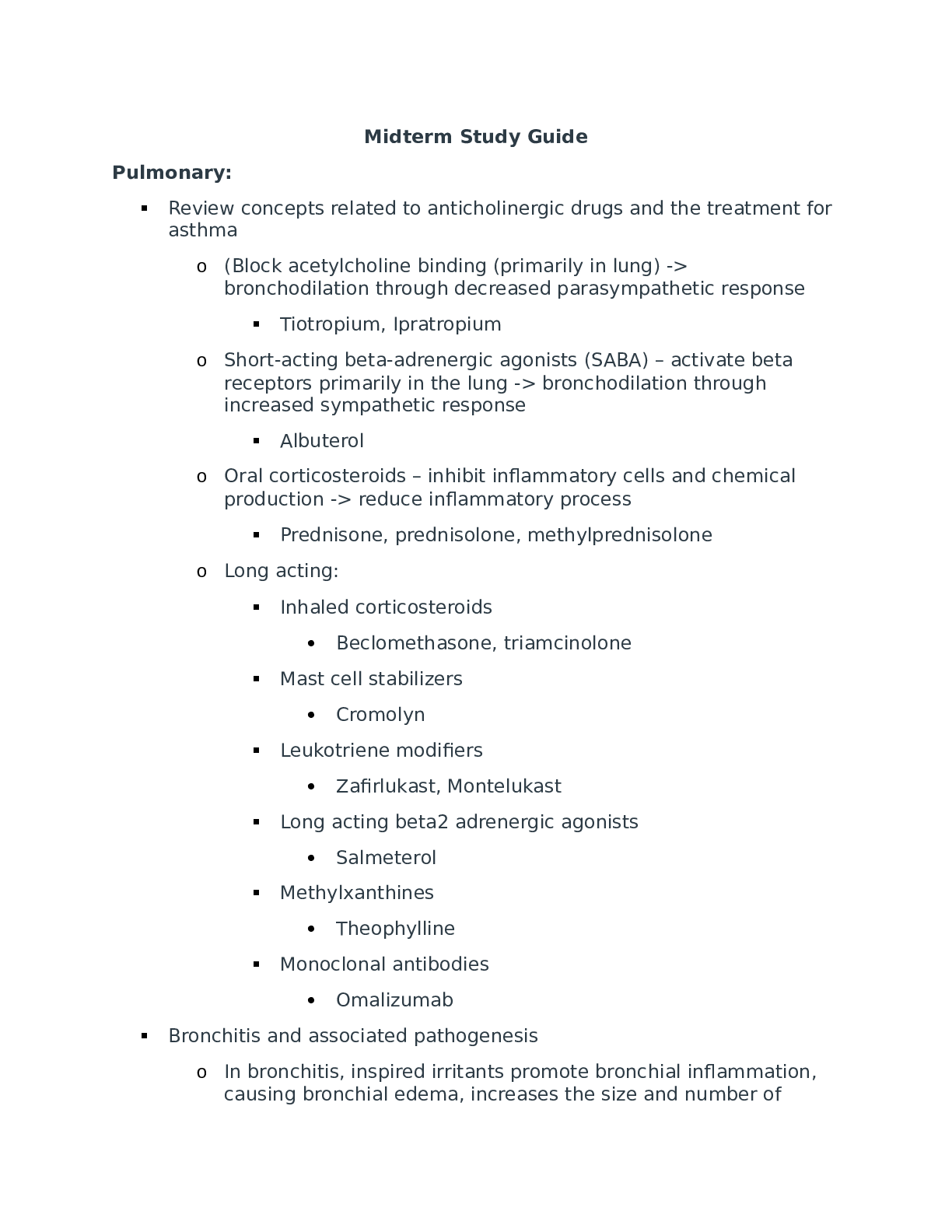
Buy this document to get the full access instantly
Instant Download Access after purchase
Add to cartInstant download
Reviews( 0 )
Document information
Connected school, study & course
About the document
Uploaded On
Nov 18, 2020
Number of pages
15
Written in
Additional information
This document has been written for:
Uploaded
Nov 18, 2020
Downloads
0
Views
67


